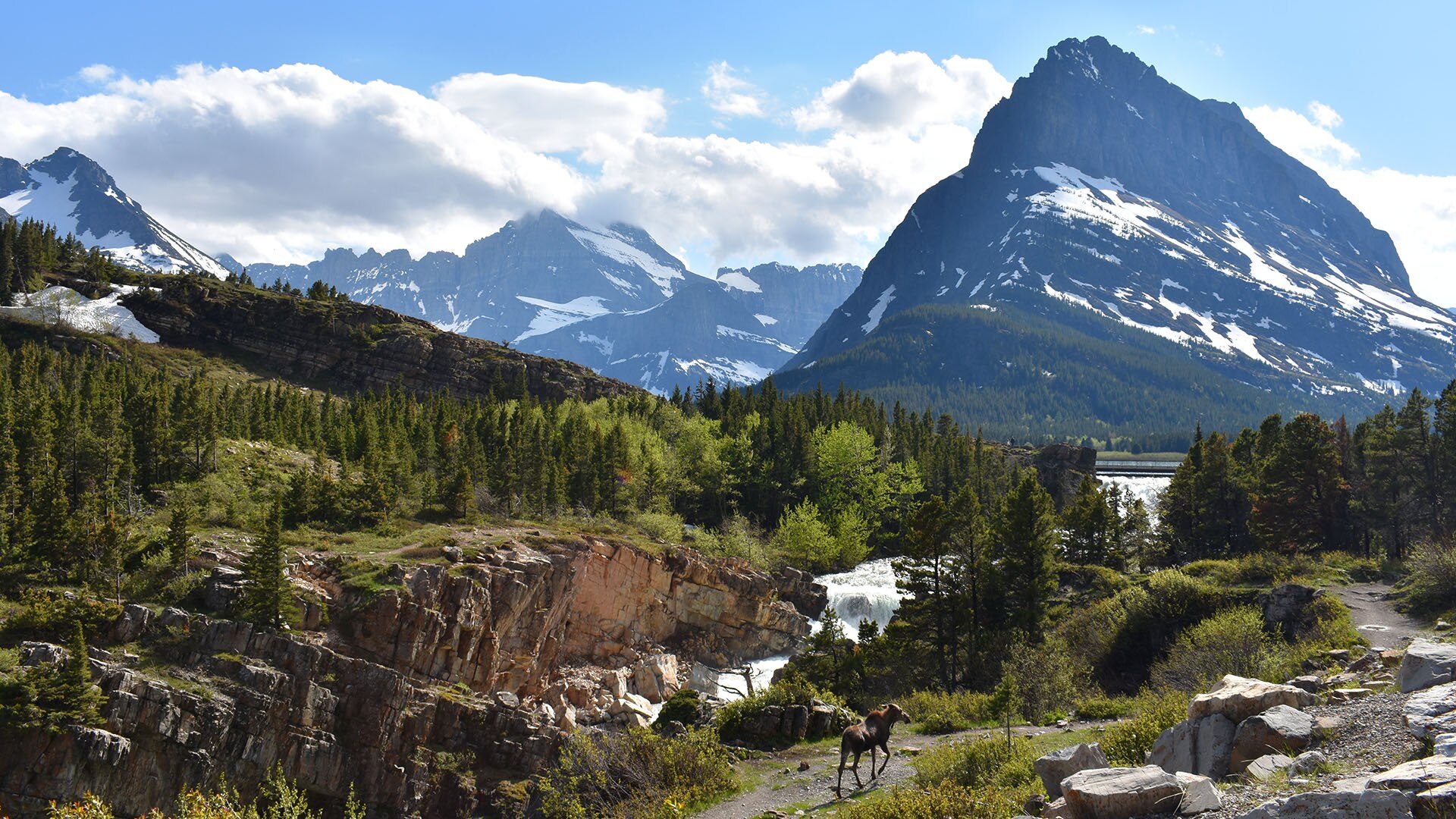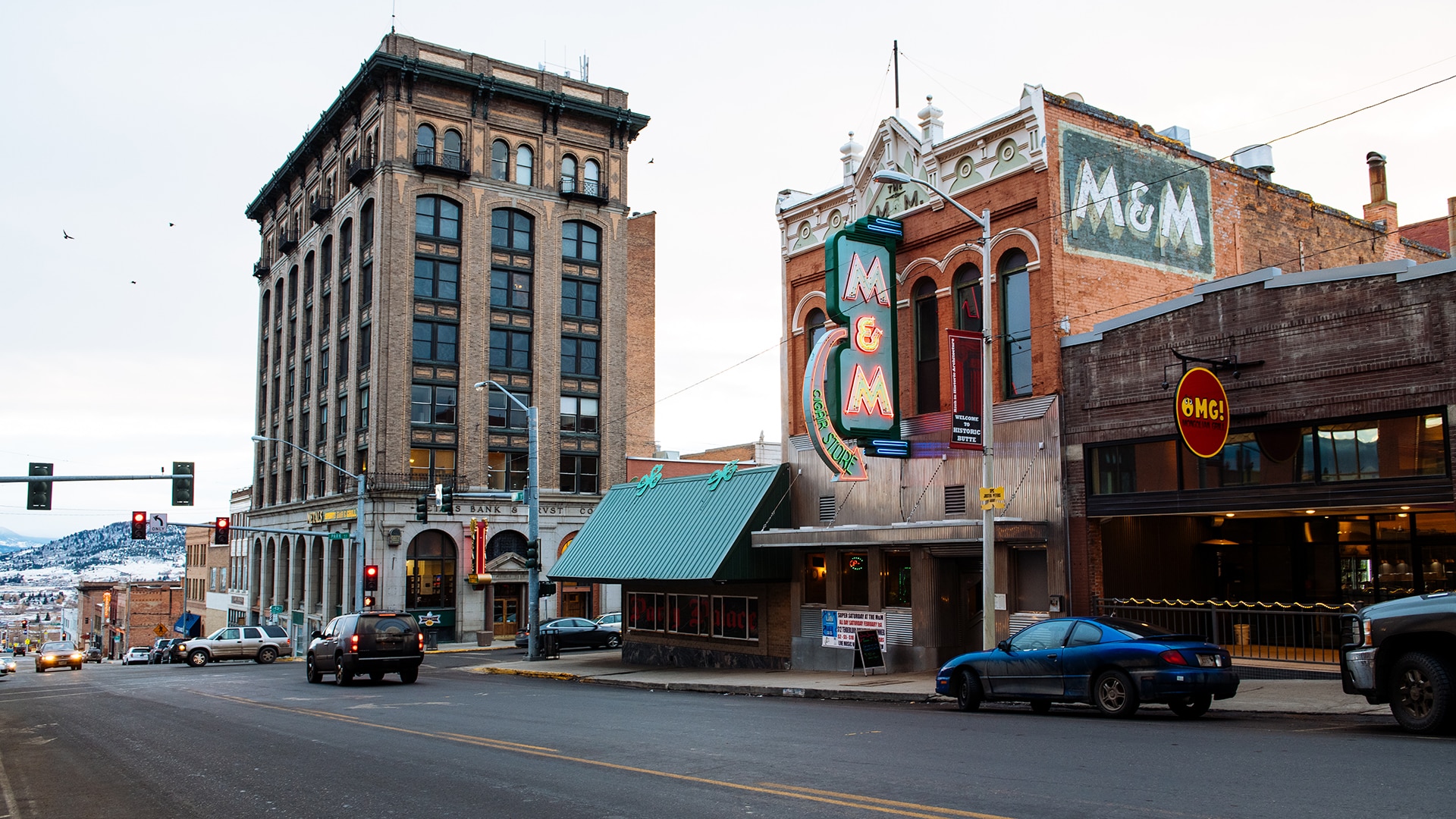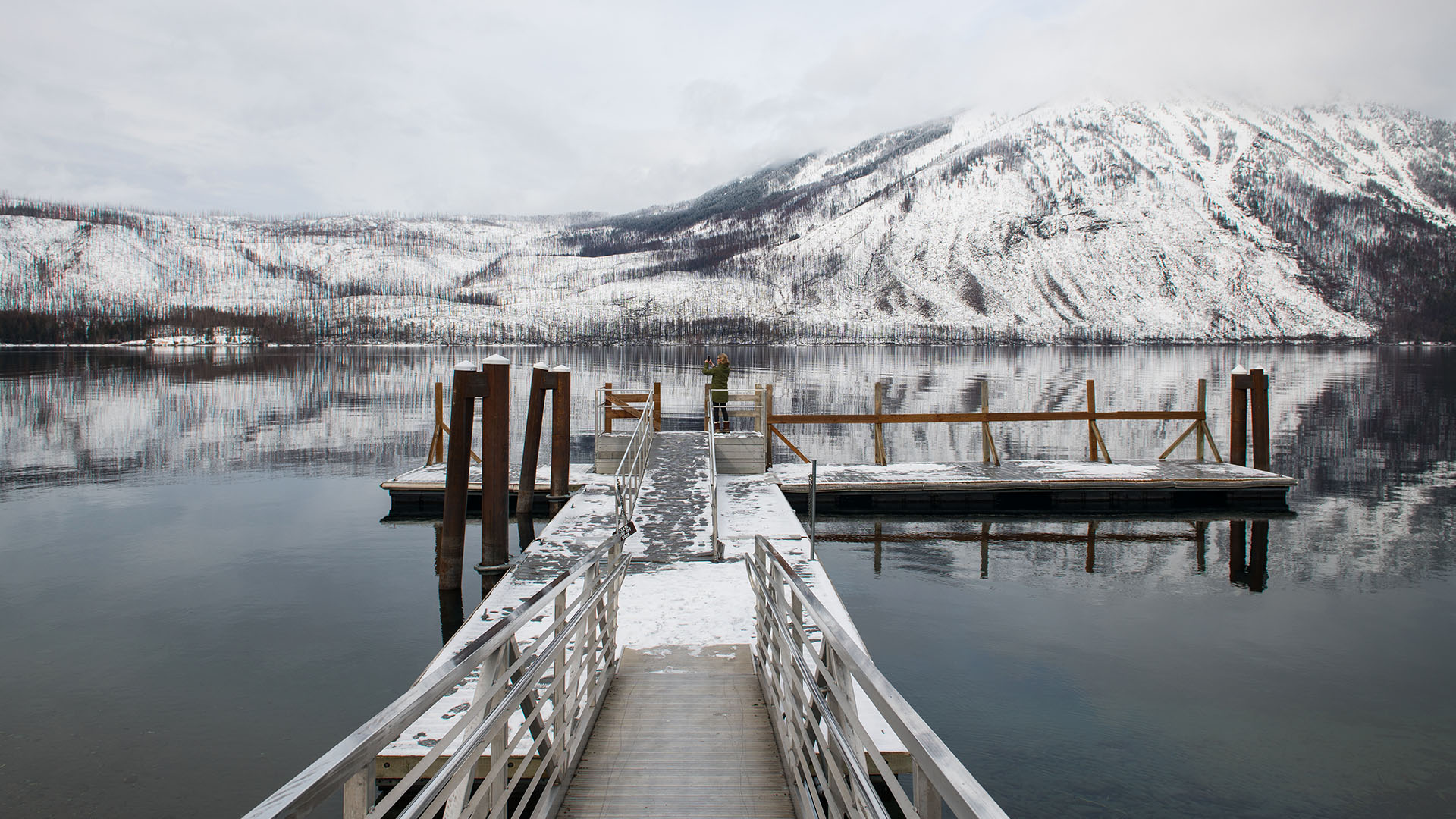Butte, Montana, Honors the Past, Embraces the Present
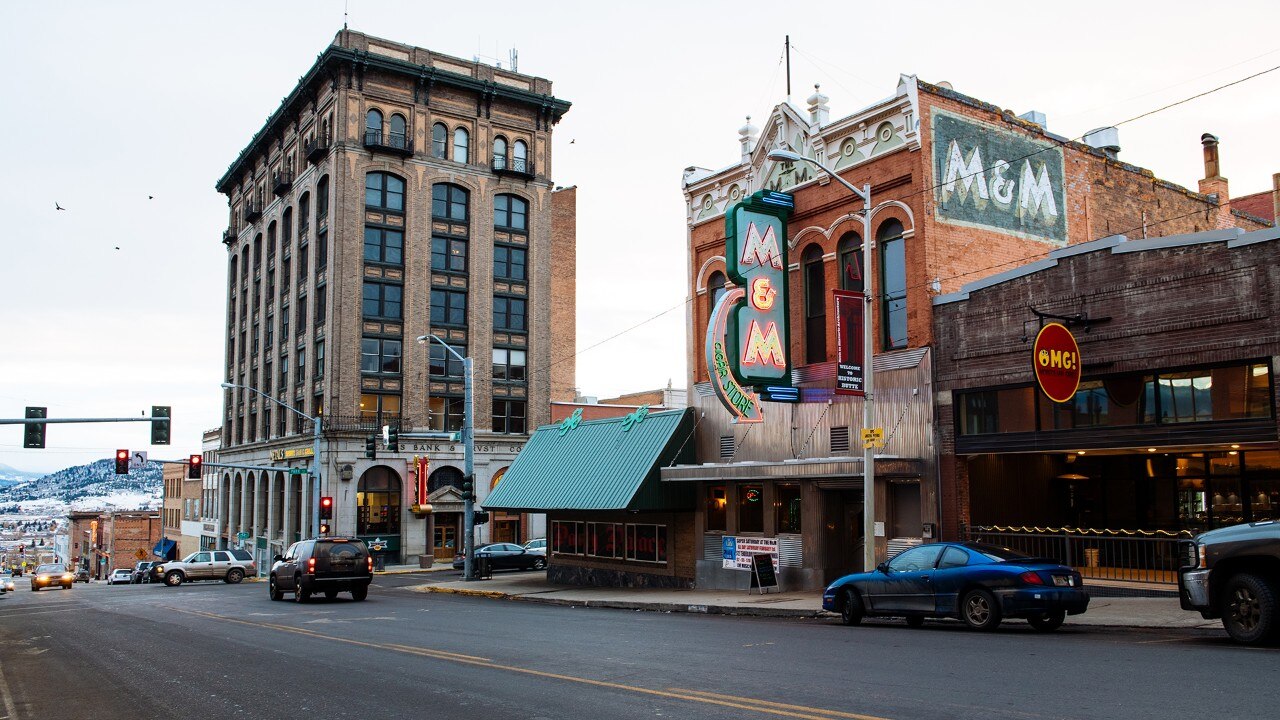
The M&M Bar and Cafe, which opened in 1890, is one of nearly 6,000 buildings that make up the Butte-Anaconda National Historic Landmark District.
Story and photos by Nick Cote
Nick is a travel writer and photographer based in Washington. See more of his work on his website.
Legendary mining town is far from a “ghost town.”
“Butte, America.” That’s what skilled miners emigrating from England and Ireland in the late 1800s called this Montana town where they settled, drawn here to help meet the country’s growing demand for electric wiring.
Why Butte? The town sat atop one of the largest copper reserves in the world, and workers dug out more than 49 miles of vertical shafts and 5,600 miles of horizontal workways to get to the valuable ore.
Many of the Irish immigrants put down roots, and in 2010, the U.S. census revealed that Butte had the largest Irish-American population per capita in the country. That explains why today you can find an Irish pub on many a corner in Butte. Much of the tight-knit community proudly preserves its history, and they say their St. Patrick’s Day parade draws thousands from all over America.
Situated in southwest Montana, Butte is about an hour’s drive from Helena, the capital. The city of some 30,000 sits about halfway between Yellowstone National Park and Glacier National Park, two places I visit regularly. Until recently, I hadn’t spent time in Butte, which is a county seat, the fifth largest city in the state and a community that welcomes visitors.
My first stop is the Butte-Silver Bow Public Archives, which houses over 22,000 linear feet of documents, newspapers, photographs, maps and immigration records that date back to the 1860s. Everything from city council meeting notes to reports of petty crimes are kept here, some in climate-controlled vaults.
“Most towns have strange things that happen. In Butte, those things happen on a massive scale,” says Ellen Crain, the director. For example, for a couple of dollars you can go out on a viewing platform to get a good look at the massive Berkeley Pit, left over from the mining days and now filled with toxic water. It’s one of the largest Superfund Cleanup sites — designed to clean up hazardous substances — in the country, and this unusual tourist attraction includes a gift shop.
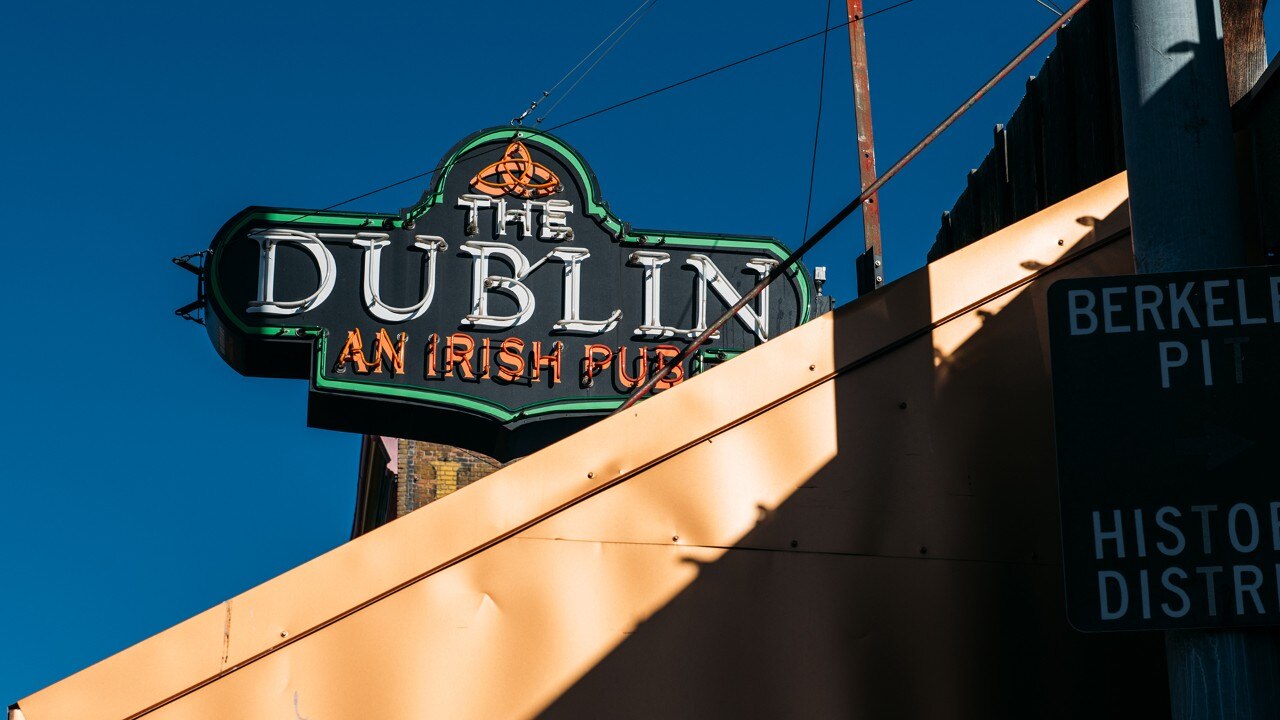
The Dublin is one of many Irish bars in Butte.

The Montana Resources mine still actively mines copper and molybdenum.
See Mining Rigs, Historic Buildings
To this day, historians tout Butte as the largest and most historically significant mining town in North America, and you can see more than 40 old mining rigs and towers scattered around the city. With some 6,000 registered historic buildings, Butte also is the largest National Historic Landmark District in the U.S.
Evel Knievel, a daredevil stunt performer and entertainer said to have suffered 433 bone fractures during his lively career, was born in Butte. He died in 2007 and is buried in Mountain View Cemetery, just south of town. Look for the cartoon rocket carved on his tombstone.
Butte also is home to the longest continuously operated Chinese restaurant in the country, the Pekin Noodle Parlor, which opened in 1911. You can also find a few pasty shops that serve the small meat pies favored by miners for their portability. Joe’s and Nancy’s are two of the best known, and you can’t go wrong with the classic meat, potato and gravy filling. Afterward, walk it off in the Old Lexington Gardens in the heart of the historic district, and see a full-scale re-creation of a floral butterfly.
A renewed commitment to historic preservation and tours offered by the World Museum of Mining allow visitors to step back in time to the days when Butte had a population of 100,000 and was a major player in the mining industry, but this is no ghost town. Butte, America, is very much alive and well.

The Butte-Silver Bow Public Archives offers historical records dating back to the 1860s.
Related
Read more stories about Montana.
- Road Trip to Montana’s Independently Owned Ski Areas
- Butte, Montana, Honors the Past, Embraces the Present
- Cold Weather Destinations
- Visiting Glacier National Park in Winter

